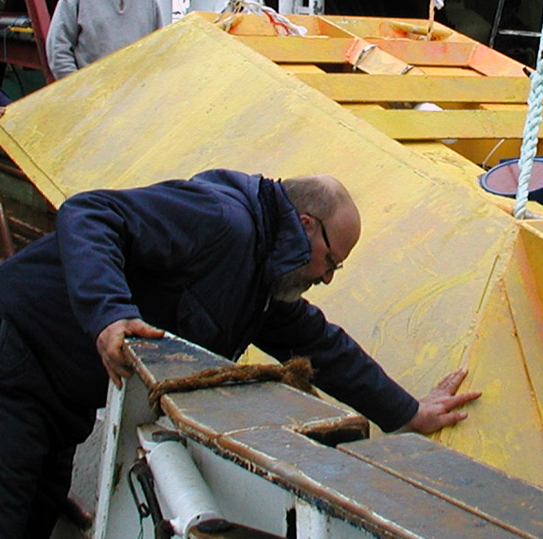- Evrópuverkefni
- Rannsóknir
- Dýrasvif
- Efnagreiningar
- Ferskvatnsfiskar
- Stangveiði
- Fiskmerkingar
- Framandi sjávarlífverur
- Hvalarannsóknir
- Kolmunni
- Kortlagning búsvæða
- Kortlagning hafsbotnsins
- Arnarfjörður
- Drekasvæði
- Hali Dohrnbanki
- Ísafjarðardjúp
- Jökulbanki
- Jökuldjúp
- Kolbeinseyjarhryggur og nágrenni
- Kolluáll
- Kötluhryggir
- Langanesgrunn
- Látragrunn
- Nesdjúp
- Reykjaneshryggur og nágrenni
- Selvogsbanki
- Suðaustan Lónsdjúps
- Suðausturmið
- Suðurdjúp
- Suðvestan Jökuldjúps
- Sunnan Selvogsbanka
- Sunnan Skeiðarárdjúps
- Sunnan Skerjadjúps
- Vesturdjúp
- Víkuráll
- Austan við Reykjaneshrygg
- Vestfjarðarmið
- Kvarnir og aldursákvörðun beinfiska
- Loðna
- Makríll
- Myndavélar við stofnmat
- Sjórannsóknir
- Steinbítur & hlýri
- Stofnmælingar
- Veiðarfærasjá
- Vöktun eiturþörunga
- Vöktun veiðiáa
- Þörungarannsóknir
- Rannsóknafréttir
- Umhverfisáhrif sjókvíaeldis
- Ráðgjöf
- Miðlun
- Ársskýrslur
- Fréttir & tilkynningar
- Fyrir skóla
- Lax- og silungsveiðin - tölur
- Málstofur
- Merki/logo
- Myndbönd
- Útgáfa
- Samfélagsmiðlar
- Öryggi & persónuvernd
- Myndasafn
- Skráning á póstlista
- Um okkur
Málstofa 17. október - Bogi Hansen
16. október 2023
 Bogi Hansen, picture taken in the field.
Bogi Hansen, picture taken in the field.
Bogi Hansen, hafeðlisfræðingur hjá Havstovan, hafrannsóknastofnun Færeyja, verður með erindi á málstofu Hafrannsóknastofnunar.
Tími: 17. október, 12:30-13:00
Staður: Stóri fundarsalurinn á fyrstu hæð Fornubúða 5, Hafnarfirði
Streymi: Beint á YouTube-rás Hafrannsóknastofnunar
Tungumál fyrirlesara: Enska
Um erindið
Fjallað verður um flæði vatns í báðar áttir yfir neðansjávar hryggnum milli Íslands og Færeyja (IFR). Í efri lögum streymir hlýr Atlantshafssjór frá Íslandslægðinni til Noregshafs (IF-innstreymi). Nálægt botninum er kalt vatn af heimskautauppruna ríkjandi og hluti þessa vatns fer yfir hrygginn sem IF-yfirfall.
Báðir þessir straumar eru hluti af Atlantic Meridional Overturning Circulation (AMOC), sem spáð er að muni veikjast með hnattrænni hlýnun. Í erindinu verður einnig fjallað um vatnsskipti á öllum Grænlands-Skotlandshrygg (GSR), tengsl þeirra við AMOC og þau ferli sem skapa þau og veita flestum þeirra mikinn stöðugleika.
Nýlegar fullyrðingar um að AMOC og "Golfstraumurinn" séu nú þegar að veikjast verða ræddar. Mest áhersla verður lögð á hlýtt flæði Atlantshafsins yfir IFR. Þetta er mesta rennsli Atlantshafsins yfir GSR með miklum varmaflutningi inn á norðurskautssvæðið. Út frá fyrri athugunum þekkjum við breytileika hans í flutningum síðustu þrjá áratugi en leiðirnar yfir hrygginn hafa ekki verið þekktar.
Röð núverandi mæla (ADCP) á undanförnum árum hafa leitt í ljós flóknar – og breytilegar – leiðir, þar á meðal aftursveigju yfir hrygginn sem og hringrás yfir Rosengarten bankanum.
Bráðabirgðaniðurstöður úr þessum útfærslum sýna einnig að þrálátustu yfirfallssvæðin á blindflugsreglunum eru yfir miðsvæðum þess og að víxlverkunin milli innstreymis og yfirfalls IF-yfirfallsins stjórnar breytileika beggja flæða. Mikil blöndun þeirra á milli veldur miklum breytingum á hitastigi þeirra og seltu.
-- ENGLISH --
Seminar on the flows across the Iceland-Faroe Ridge by Bogi Hansen, Faroe Marine Research Institute, Havstovan.
Bogi Hansen, Physical Oceanographer, from Faroe Marine Research Institute, Havstovan, will host a short seminar at Hafrannsóknastofnun. The seminar will take place Tuesday the 17th of october at 12:30 in our big meeting room at Fornubúðir 5 in Hafnarfjörður.
Time: 12:30-13:00, 17th of October
Place: The meeting hall in Fornubúðir 5, Hafnarfjörður
Stream: Live through MFRI's YouTube channel
Lecturer's language: English
The flows across the Iceland-Faroe Ridge
Across the submarine ridge between Iceland and the Faroes (IFR), water flows in both directions. In the upper layers, warm Atlantic water flows from the Iceland Basin to the Norwegian Sea (IF-inflow). Close to the bottom, cold water of Arctic origin dominates and some of this water crosses the ridge as IF-overflow. Both of these flows are part of the Atlantic Meridional Overturning Circulation (AMOC), which is projected to weaken with global warming.
The talk will include an overview of the exchanges across the whole of the Greenland-Scotland Ridge (GSR), their links to AMOC, and the mechanisms that generate them and provide most of them with a high degree of stability.
Recent claims that the AMOC and the “Gulf Stream” are already weakening are discussed. Most of the focus will be on the warm Atlantic flow across the IFR. This is the strongest Atlantic water flow across the GSR with a large transport of heat into the Arctic region.
From observations, we know its transport variations over the last three decades, but the pathways across the ridge have not been known. A series of current meter (ADCP) deployments in recent years has revealed a complicated – and variable – set of pathways, including retroflection over the ridge as well as a recirculation over the Rosengarten Bank.
Preliminary results from these deployments also show that the most persistent overflow sites on the IFR are located over its central parts and that the interactions between the IF-inflow and the IF-overflow control the variations of both flows, while intensive mixing between them induces strong modifications of their temperatures and salinities.
Hér verður hægt að horfa á málstofuna/You can watch the seminar below:


